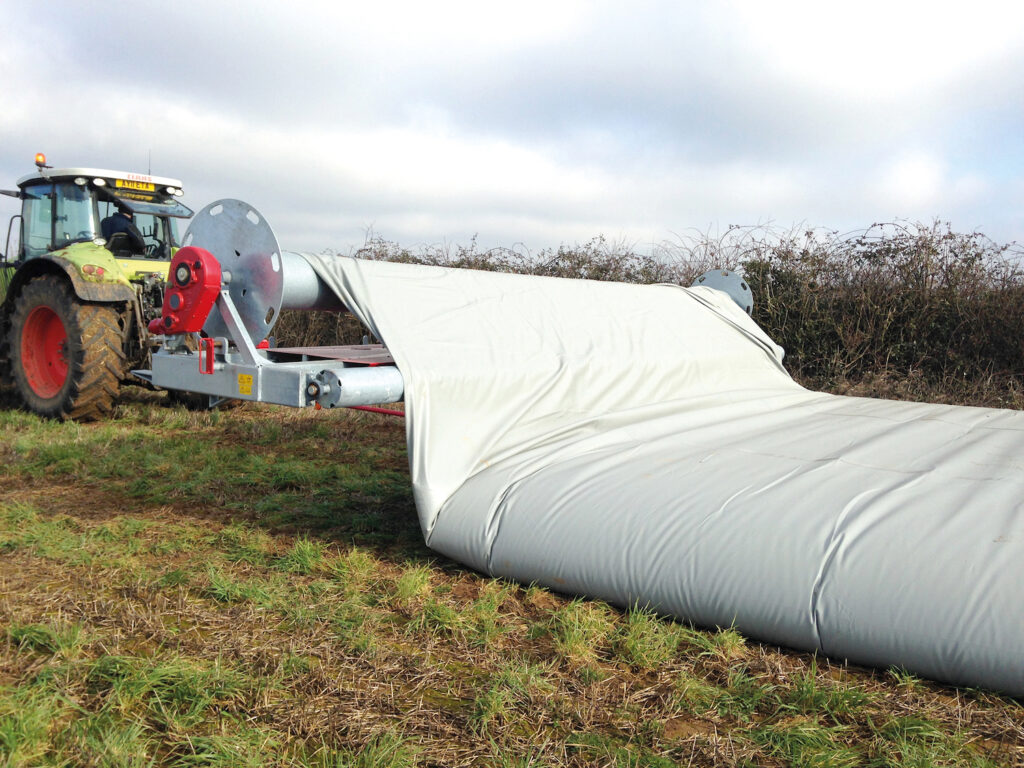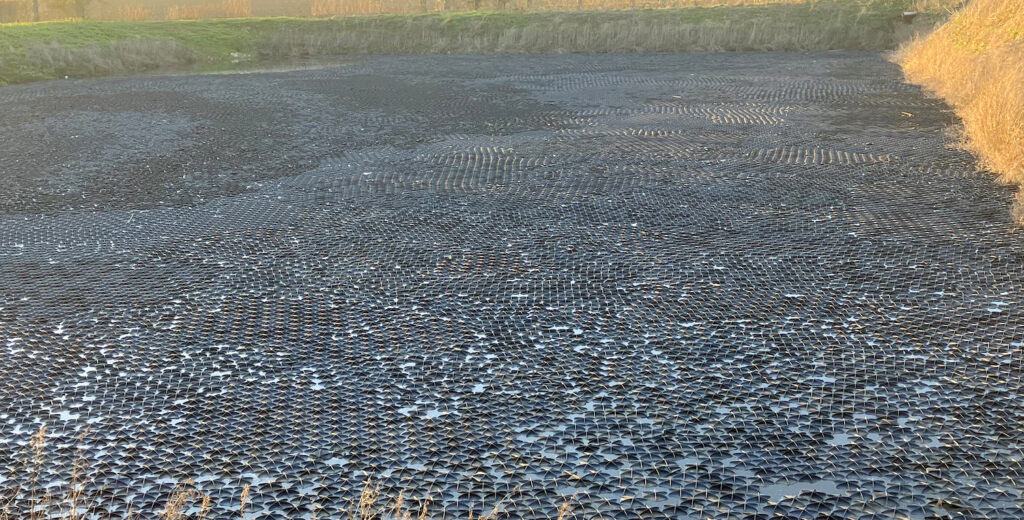Are you prepared for new slurry legislation?
24th October 2023
The recent Slurry Forum 2023 brought together industry experts to discuss upcoming legislation and government funding, as well as a run-down of the options for storage, covers, additives and testing. Livestock editor Sarah Kidby reports.

With all slurry stores to be covered by 2027, John Tydeman, sales manager at Tramspread, outlined the pros and cons of different storage and cover options. He urged farmers to view slurry as an asset, not waste, and stressed the importance of looking after your store to maintain capacity.
Slurry storage grants offered by the government require farmers to reach and maintain at least six months’ storage capacity. The AHDB Slurry Wizard is a useful tool for calculating what size store you need.
Planning a new store
A good place to start is familiarising yourself with SSAFO regulations, ensuring any new store and its location meet the standards. If located in a farmyard, a circular store with a self-supporting roof may be the best option, but is also the most expensive, John explained.
Moving down the scale, there are satellite stores or, if you have a little more space, a bag tank could be the best choice. These have a 25-year design life and typically cost 35% less than the equivalent circular tank. Bag tanks are available from Tramspread in several sizes up to 7,500m3 and come in one piece with liner and cover all in one. Integral stirrers and pipework are all part of the kit and the tank can be easily installed in 3–4 days on outlying land and unstable ground. Sometimes planning permission is not required and they can be installed under permitted development rights if they are far enough away from nearby properties. This is a big advantage over circular and concrete tanks. They are also quite cost-effective compared to other types of store, John noted.
The cheapest permanent option is a covered lagoon with floating tile or fixed fabric cover. Lagoons are generally more difficult to manage, he explained, particularly with fabric covers as these can make it very difficult to stir the slurry, resulting in solid build up which can reduce the store’s capacity and make slurry much harder to pump.
Another option is a temporary bag store, which can be set out wherever needed if you have some outlying land, up to 350m3. This allows umbilical spreading in that block of land, then the bag can be rolled up and moved to another site to repeat the process.
All the above options, apart from the temporary stores, feature in the government’s Slurry Infrastructure Programme, offering various levels of financial support.
There is also funding for stirrers to be fitted into new stores. Additionally, separation before slurry gets into the store can be a big help, reducing the need for stirring and making sure you have a well-homogenised product, John noted.
Slurry cover options
There are three basic types of slurry cover:
- A self-supporting fabric cover: The most expensive option and only suitable for new circular stores.
- Fabric floating cover: Again, expensive and can be fitted to lagoons, or circular covers can be fitted to tanks. These make it harder to stir and manage the store but work quite well if using separated slurry. They also collect rainwater which must be periodically pumped off.
- Floating tiles (such as Tramspread’s Hexa-Cover): These don’t keep rainwater out of the store but are very easy to install, quite cheap and have a much longer lifespan than fabric, John said. They are a really good alternative to fabric covers and particularly well suited to older circular tanks that lack the structural integrity to cope with one of the tensioned covers – as well as odd-shaped slurry lagoons that are difficult to cover with a fabric solution. The lagoon doesn’t need to be emptied and cleaned to install the 8in tiles, which are made from recycled plastic. The tiles are simply poured over the surface, where they organise themselves into symmetrical patterns. They can reduce emissions by up to 96%, John said.

Silage additives
Silage additives are becoming a more common solution for breaking solid content down and improving the plant availability of nutrients. “These are quite cheap in the grand scheme of things and normally one course per year is enough to greatly improve any slurry store. Also, although it’s not a magical solution it can help to reduce solid in stores that have been mismanaged and have got a big solid build up,” John said.
Callum Norman, of Origin Fertilisers, shared results from trials of Digest-It, one of the only liquid biological composting additives on the market. It’s a one-application product that’s comprised of molasses, sugars and seaweed, mixed with certain bacteria to allow the product to break down solids and increase the nutrient content. It is also the only additive with a quantity of P and K in it. Callum explained it improves fertiliser nutrient levels, reduces ammonia concentration and odour, breaks down crust and solids and helps to boost soil fertility.
Key results from Digest-It trials:
- 31% decrease in ammonia emissions on a farm in Ireland, demonstrated by twice daily measurements of gases from two 50,000-gallon slurry tanks over 12 weeks.
- 33% increase in N over an 8–12-week period on 15 different dairy farms.
- Six-year average increase of 18% in first cut silage, according to long-term grass silage trial comparing treated and untreated slurry.
- Other trials have revealed significantly higher worm counts where Digest-It has been applied compared to untreated slurry.
Digest-It is usually applied in October/November and needs 8–12 weeks in the tank to work effectively. Twenty litres treats 100,000 gallons of slurry, it’s organically certified and the liquid form means no respiratory protection is required as results show up to 80% reduction in ammonia emissions is possible. It results in a more usable slurry, and saves costs on stirring and bag fertiliser, Callum concluded.
Toby Ward of Origin Fertilisers pointed out that it’s not just about N; sodium is key too. Grass can become bitter over time and sodium “is like putting salt on chips”. Origin Fertilisers’ Sweetgrass range with sodium increases palatability and therefore dry matter intakes, yields and daily liveweight gain.
Bob Fabri, of Eurofins Agri UK, also pointed out the importance of looking at the whole cycle when testing nutrient levels of soil and slurry. Phosphorus, for example, is a very immobile element and needs to be very close to the root of the plant to be taken up – so high P stocks in soils may not translate to silage and slurry, which could result in deficiencies in cattle.



